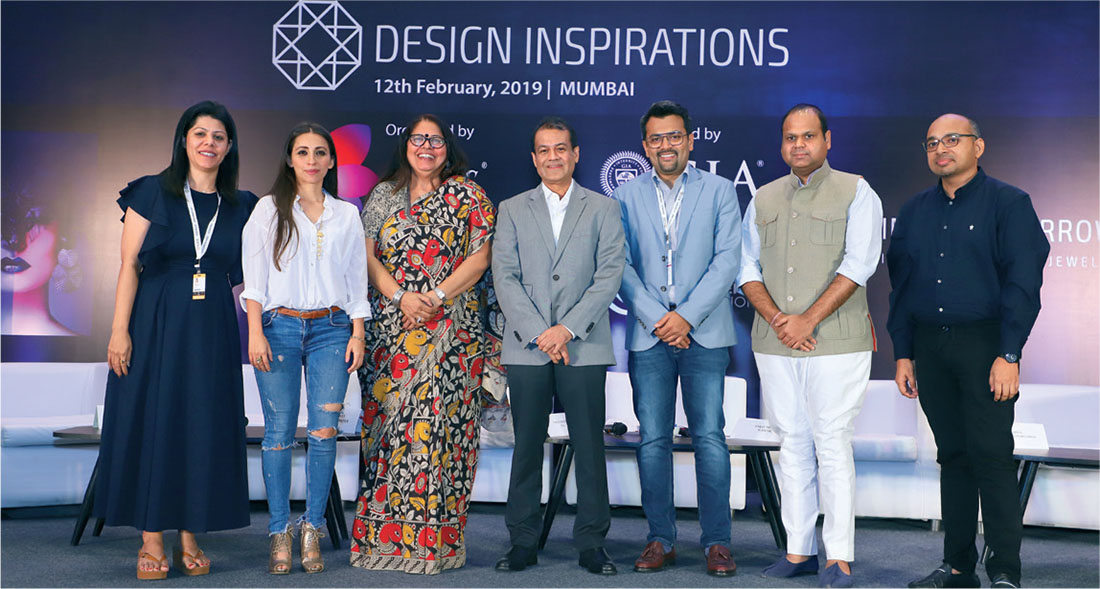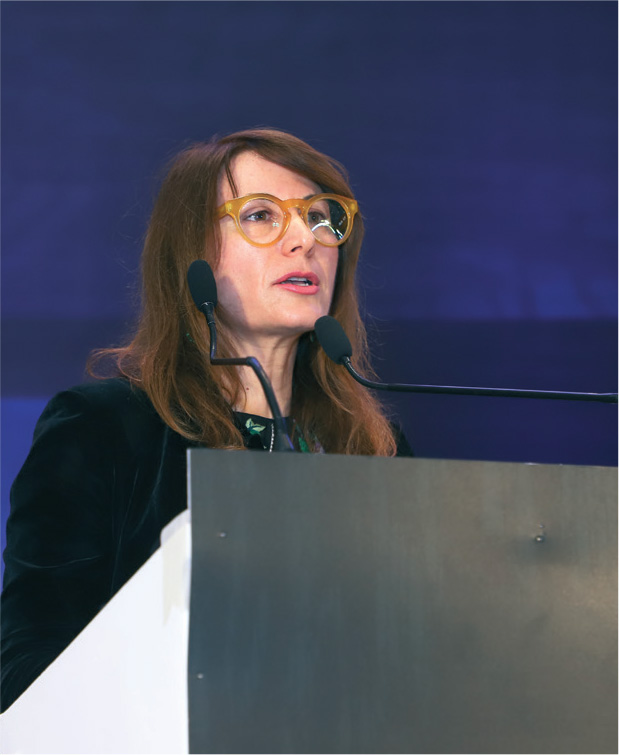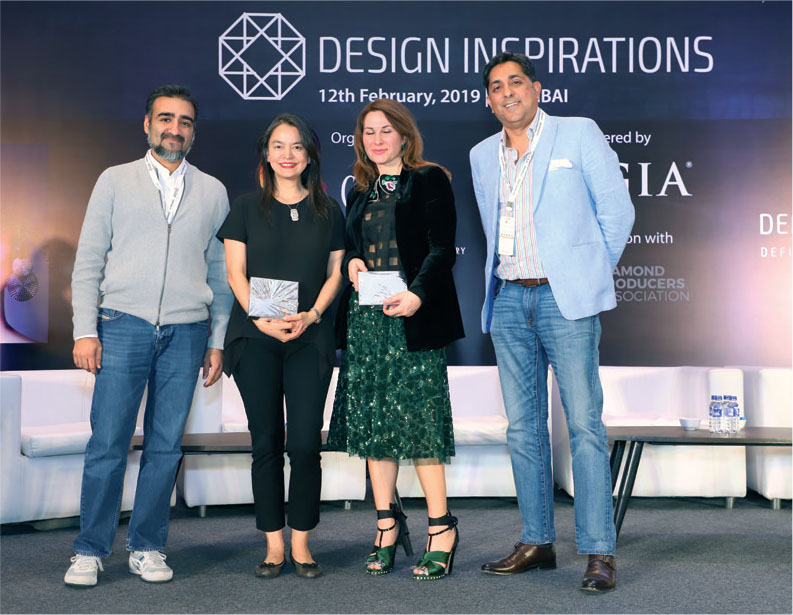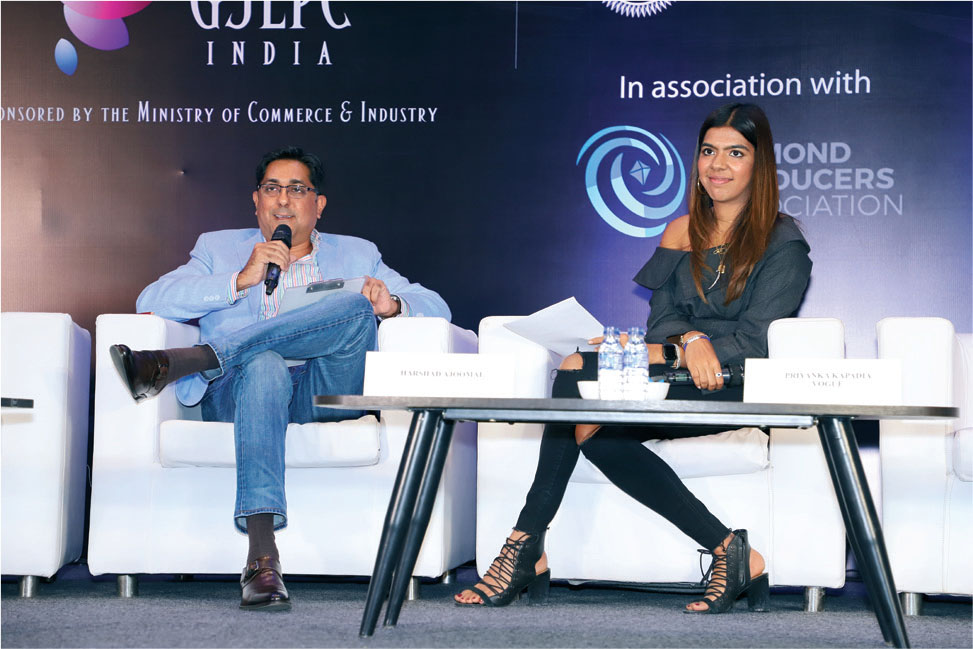Design Inspirations, the annual ritual that has come to be associated with the IIJS Signature show, was held on the sidelines of the event on February 12th.
Design Inspirations includes a series of discussions to educate India’s leading talent and develop their skills in the international marketplace. The theme of the event this year was ‘Defining tomorrow. Defining the future of jewellery design.’ In her opening remarks, trend forecaster Paola De Luca, who heads The Futurist, a luxury market intelligence agency, said that the future is a reflection of today, and today is a projection of the past. She emphasised that it was important to reposition the concept of luxury for the millennial generation.
“The journey is about the quest to find the ‘new modern’. Designing is not just about drawing a beautiful piece of jewellery, it also involves the art of storytelling through curated merchandise,” De Luca said.
According to De Luca, India is reclaiming its global stature as a leading pioneer in luxury jewellery design. She added, “Having been a co-founder of the Design Inspirations programme, I am extremely proud to be associated with this initiative to drive forward Indian design talent on the global stage.”
GJEPC chairman Pramod Agrawal said that the jewellery industry is constantly upgrading to meet the ever changing demands of consumers. In his short address, Tom Moses of the GIA noted that the history of diamonds and India is intertwined and the influence of India on big design houses like Cartier and Van Cleef & Arpels was evident.
Richa Goyal Sikri, a jewellery writer and self-confessed gem addict, spoke about decoding artist jewellers. She identified four leading brands – Amadeo, Faberge, Dolce & Gabbana and Caratell – each having a distinct design DNA and marketing vision.
Sikri said that Amadeo Scognamiglio, who is known as the ‘king of cameos’, is famous for his bespoke creations and core design identity. His modern interpretations of this ancient art had found a new audience on social media.
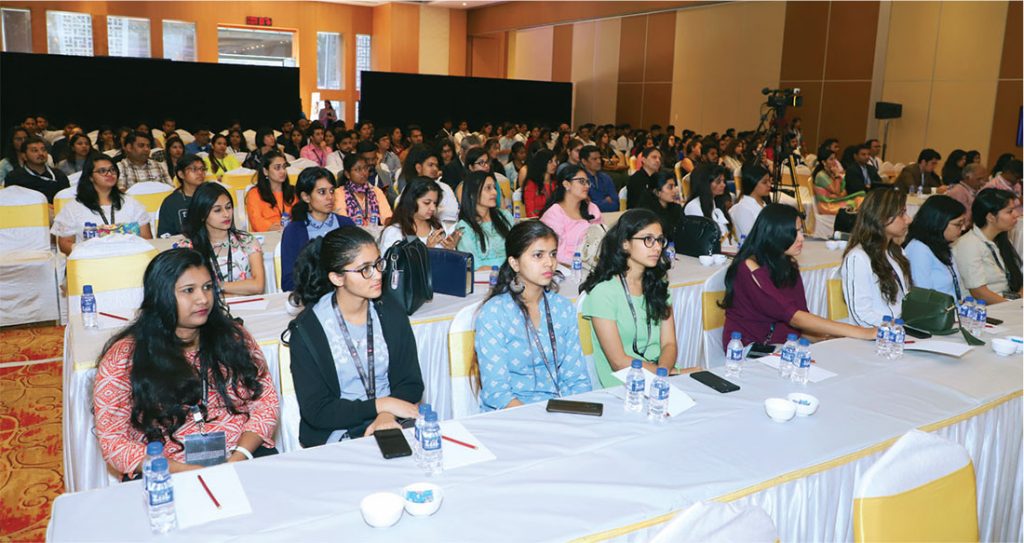
Riding on a rich jewellery legacy, Faberge revived its brand identity after nearly a century by roping in Frederic Zaavy, a workmaster who had a cult following of his own, Sikri noted. Zaavy took forward Faberge’s legacy through his contemporary creations. The takeaway from this example? “When you don’t have time to rebuild the brand, acquire expertise; have a clear strategy and recreate the strong historical story around the brand, which Faberge has,” she said.
Dolce & Gabbana, a high-fashion brand, is devoted to preserving Italian artisanship, culture and heritage, and builds on these strengths, Sikri informed.
In her final case study, Sikri spoke about Caratell, a single boutique establishment in Singapore run by founder designer Michael Koh, who uses top grade stones handpicked from all over the world in avant garde designs. “Since Asians always look for intrinsic value in a piece, he combines art with this need,” Sikri said. “He also conducts educational seminars because he knows that consumers are looking for something more than the transactional experience.”
Harshad Ajoomal, founder of luxury jewellery brands H. Ajoomal & H Craft, held a freewheeling one-on-one conversation with Vogue India senior fashion editor Priyanka Kapadia about the role of jewellery in the business of fashion. Kapadia said that jewellery was important in styling a look because it instantly elevates an outfit. She said that super sized hoops, chokers, midi-rings and earrings were trending.
Design entrepreneur Pallavi Foley spoke about past collaborations with online jewellery brand Bluestone, and the Flame of the Forest collection with fashion designer Wendell Rodricks. She emphasised that India has been a favourite design inspiration ever since she started off in this field 17 years ago.
Abhishek Rastogi of Titan Co. said that the real power of design was in the thought. He offered some examples of how a close collaboration between the designer and manufacturer led to solutions that were commercially viable. Among the examples of innovations he presented were: laser cutting on a curved surface, increasing the spread of a diamond to give a higher perceived value, and improving the look of cheaper synthetic colour gemstones by leaving the bottom half as a matt finish cabochon to improve the amount of light reflected back.
GJEPC vice chairman Colin Shah moderated the panel discussion on the dynamics of a collaboration between the designer and manufacturer. The panellists were jewellery designer Priti Bhatia of Awesome Sparklers, Pallavi Foley, Yash Agarwal of Birdhichand Ghanshyamdas, Ankit Mehta of H. Dipak, Abhishek Rastogi, and Nirupa Bhatt of GIA India. The speakers noted that designers need to understand their role and their core competencies. They agreed that it was important to be aware of what’s happening in one’s surroundings as awareness was critical to originality.
The panellists also advised young designers to build a personal brand and form trusting relationships. They felt that Indiainspired designs would be the driving theme for 2019 and that self-purchasing was continuing to grow. The speakers noted that institutes and manufacturers needed greater practical exposure in order to prepare students for real world challenges.
Foley said, “It is important to understand the design process and learn creative problem solving as that’s where the essence of design really lies.” The panellists were in agreement that there’s no better time to be a designer in India than the next five years.
(Design Inspirations 2019 was powered by GIA in association with DPA.)

